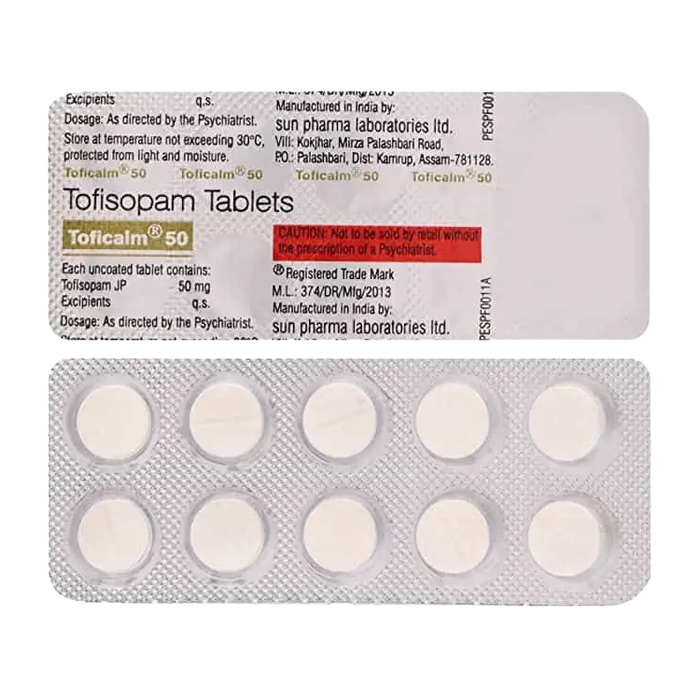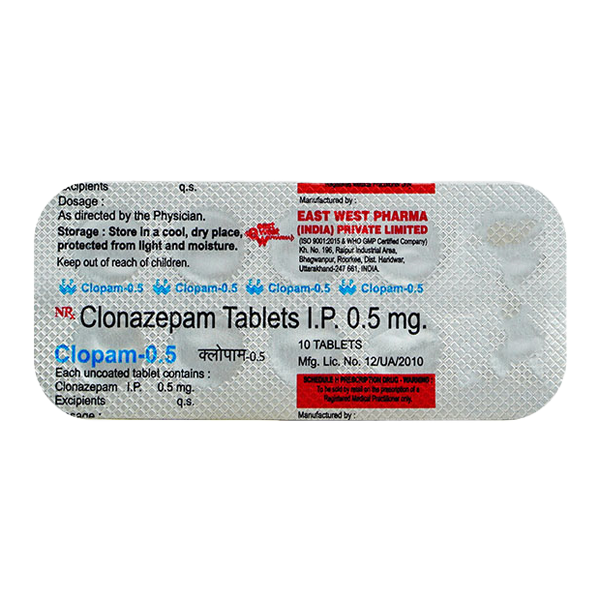Description
Pharmacokinetics of Tofisopam
Tofisopam is quickly absorbed after oral intake, reaching peak blood levels within two hours. It binds strongly to benzodiazepine receptors in the brain and can remain effective for up to 24 hours. The drug is processed in the liver by enzymes CYP3A4 and CYP2C19, and its byproducts are eliminated via urine. Its elimination half-life is about 24 hours, indicating it takes that long for half the drug to clear from the body. Since tofisopam shares metabolic pathways with other medications, it may alter the metabolism or effects of co-administered drugs. Always inform your doctor about other medications you’re taking before starting tofisopam.
Pharmacodynamics of Tofisopam
Tofisopam, a type of benzodiazepine, produces calming effects by enhancing GABA activity in the brain. GABA is a neurotransmitter that reduces nerve cell activity, helping to alleviate anxiety. Tofisopam specifically targets GABAA receptors, especially in the amygdala—a brain region involved in processing fear and anxiety. This action increases chloride ion flow, stabilizing neurons and reducing excitability. Additionally, tofisopam may interact with serotonin and dopamine receptors, which may enhance its anti-anxiety benefits.
Dosage Guidelines
The standard dosage for treating anxiety with tofisopam ranges from 50 to 300 mg per day, typically split into three doses. Dosage should be tailored to individual needs and tolerance. It’s best to take the medication with food to minimize gastrointestinal discomfort. Tofisopam is not recommended for children or adolescents under 18, and should be used cautiously in the elderly and in those with liver or kidney issues.
Side Effects
Common side effects may include:
-
Drowsiness or sedation
-
Dry mouth
-
Dizziness
-
Nausea or digestive issues
-
Blurred vision
-
Tremors
-
Headache
Less common but serious side effects include:
-
Allergic reactions (rash, swelling, breathing issues)
-
Mood changes, aggression, or unusual behavior
-
Depression or suicidal thoughts
-
Hallucinations, confusion, or memory problems
-
Chest pain, coordination issues, or appetite changes
If any of these symptoms occur, consult a healthcare provider immediately. Tofisopam may also interact with other drugs like opioids, antidepressants, and other benzodiazepines, increasing the risk of drowsiness and other side effects.
Abuse Potential
As with other benzodiazepines, tofisopam carries a risk of misuse due to its calming and sedative properties. Some individuals may use it to self-medicate or experience euphoria, which can lead to tolerance, dependence, and withdrawal. Tofisopam should only be used as prescribed. Misuse can result in severe health consequences, including overdose. If you or someone you know is misusing this medication, seek help from a medical professional or addiction specialist.
Safety and Tolerability
Tofisopam is generally safe when used as directed, but certain individuals—particularly older adults or those with liver or kidney issues—may be more sensitive to side effects. Before starting treatment, inform your healthcare provider about all medical conditions and medications you’re taking, including herbal supplements. This helps reduce the risk of adverse effects and drug interactions.
Regulatory Approval
Tofisopam (marketed under names like Emandaxin, Grandaxin, and Sériel) is approved in several European countries for treating anxiety and managing alcohol withdrawal. It was authorized in the 1980s for adult use but is not approved by the FDA for use in the United States. As such, its availability in the U.S. is limited. If you have questions regarding its availability, consult a pharmacist or healthcare provider.

 STORE OPEN | LATEST UPDATE:
STORE OPEN | LATEST UPDATE:













Reviews
There are no reviews yet.